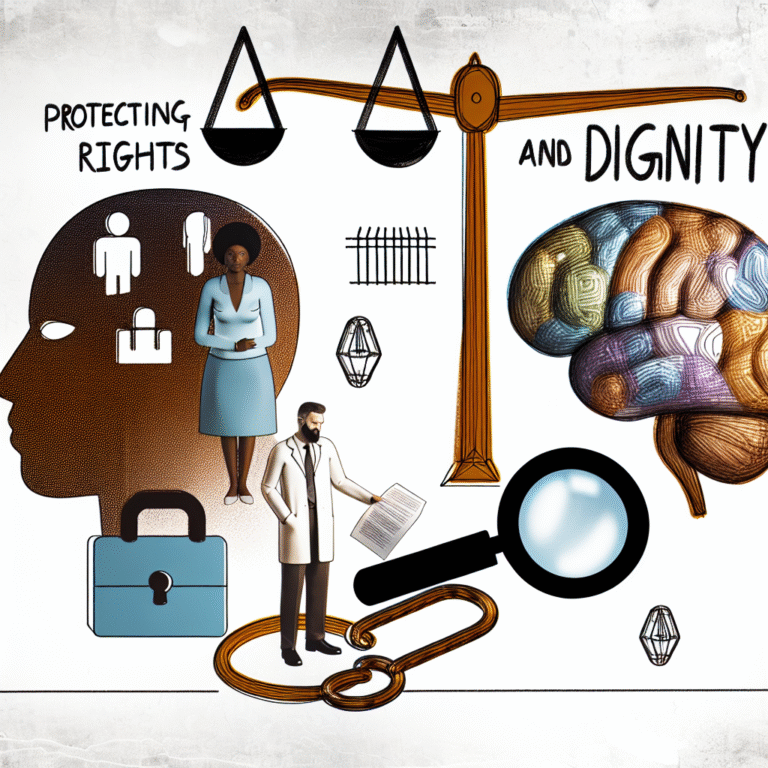
Maslow’s Hierarchy: The Key to Personal Growth and Fulfillment
Introduction
In an era where personal development is celebrated as a pathway to success, the quest for self-actualization often feels overwhelming. It’s about finding that sweet spot where your potential meets your passions, and your dreams translate into reality. This journey can sometimes feel like navigating a maze without a map. That’s where Maslow’s Hierarchy: The Key to Personal Growth and Fulfillment comes into play, offering a structured framework through which you can explore your needs and aspirations.
Abraham Maslow, a prominent psychologist, introduced the concept of a hierarchy of needs in his groundbreaking 1943 paper. This pyramid-shaped model has since evolved into a powerful tool for understanding human motivation and personal development. Its beauty lies in its simplicity—each level represents a fundamental human need that, when fulfilled, paves the way for increased personal growth and self-discovery.
In this article, we will delve into the intricacies of Maslow’s Hierarchy: The Key to Personal Growth and Fulfillment, exploring how each layer helps individuals unlock their true potential while providing compelling examples and actionable insights to aid in your personal journey.
The Structure of Maslow’s Hierarchy
Maslow’s Hierarchy of Needs is often depicted as a pyramid with five distinct levels. Each level signifies a category of needs that must be satisfied to reach higher levels of personal growth. Resolving these hierarchical needs allows individuals to develop holistically and achieve a profound sense of fulfillment.
1. Physiological Needs
At the base of the pyramid lies the physiological needs, which encompass basic human survival requirements such as food, water, warmth, and rest. For anyone aiming for personal growth, it’s essential to first address these fundamental needs.
Case Study: A Journey Through Adversity
Consider the case of John, who grew up in a low-income household. His early years were marked by food insecurity and a lack of stability. When he secured a stable job and gained access to necessary resources, he found himself in a position to focus on his health and well-being. With physiological needs addressed, he shifted his attention towards education and self-improvement.
Analysis
John’s story illustrates that before one can embark on the path of personal growth, the basic needs must be met. This initial step is essential for mental clarity and motivation.
2. Safety Needs
Once physiological needs are met, safety becomes the priority. This category includes personal security, health, and well-being, along with financial safety and living in a secure environment.
Table: Safety Needs in the Workplace
| Safety Need | Example |
|---|---|
| Personal Security | Employee health plans |
| Financial Security | Job stability and fair wages |
| Health and Well-being | Safe working conditions |
Case Study: Creating a Secure Haven
Samantha transitioned from an unstable work environment to a company that prioritizes employee welfare. The shift safeguarded her mental health, enabling her to develop professionally and personally.
Analysis
Samantha’s experience speaks volumes about the necessity of feeling secure before pursuing higher aspirations. Safety allows individuals to explore creativity and innovation without the fear of failure.
3. Love and BelongingNeeds
The third tier of Maslow’s hierarchy emphasizes social connections. Humans are inherently social beings, and the need for love and belonging drives our motivations for relationships and community.
Case Study: Building Support Networks
Mark experienced profound loneliness during a crucial phase of his career. After joining a professional networking group, he found a sense of belonging that motivated him to pursue his entrepreneurial dreams.
Analysis
Mark’s transformation showcases the power of community in personal growth. Establishing meaningful connections can invigorate your path toward fulfillment.
4. Esteem Needs
The fourth level encompasses self-esteem and recognition from others. Achieving these needs boosts confidence and encourages individuals to pursue their goals with tenacity.
Table: Esteem Needs Enhancement Strategies
| Strategy | Description |
|---|---|
| Setting Achievable Goals | Establishing benchmarks for progress |
| Seeking Feedback | Encouraging constructive criticism |
| Celebrating Small Wins | Recognizing milestones on the journey |
Case Study: The Confidence Builder
Lily worked tirelessly to develop a successful career. However, her aspirations felt stagnant until she engaged in peer feedback sessions. The recognition she received not only boosted her confidence but also opened doors for further career advancements.
Analysis
Lily’s journey emphasizes that external validation plays a crucial role in building self-esteem. As individuals achieve recognition, they become more motivated to aspire to higher accomplishments.
5. Self-Actualization Needs
At the apex of Maslow’s Hierarchy is self-actualization—the realization of one’s potential and self-fulfillment. This need is about pursuing personal growth, creativity, and a deep understanding of oneself.
Case Study: The Artist’s Journey
Consider Maria, a graphic designer who spent years in a corporate environment. Once she stepped outside her comfort zone to create her art, she discovered her true calling. By embracing her creativity, Maria found deeper fulfillment and a vibrant sense of purpose.
Analysis
Maria’s story illustrates that self-actualization is deeply personal. It requires introspection and a willingness to venture into uncharted territories, highlighting that growth often comes from following one’s passions.
Practical Applications of Maslow’s Hierarchy
Understanding Maslow’s Hierarchy: The Key to Personal Growth and Fulfillment can be beneficial in various contexts—from workplace dynamics to coaching and education. Here are some practical applications:
Workplace Development
Employers can utilize Maslow’s framework to cultivate a positive work culture that nurtures employee growth. By addressing safe working conditions and fostering teamwork, organizations foster a motivated workforce that is likely to be more productive and engaged.
Personal Coaching
Life coaches can leverage Maslow’s Hierarchy to guide clients on their personal development journeys. By assessing where clients stand within the hierarchy, coaches can create personalized strategies to propel them from basic needs toward self-actualization.
Educational Environments
Educators can implement Maslow’s concepts to create enriching experiences for students, ensuring that the classroom environment addresses physiological and safety needs, paving the way for better learning outcomes.
Conclusion
Maslow’s Hierarchy: The Key to Personal Growth and Fulfillment acts as a vital compass in our journey toward self-discovery. By systematically addressing our needs, we can create a roadmap for personal and professional improvement. Each level serves as a stepping stone that leads us towards fulfillment—a journey that involves resilience, courage, and an unyielding commitment to self-betterment.
As we take the first step toward personal growth, remember that the journey is not a race. Embrace each stage, reflect on your progress, and be open to the possibilities that await. Your path to self-actualization is within reach—take that step today.
FAQs
1. What is Maslow’s Hierarchy of Needs?
Maslow’s Hierarchy of Needs is a psychological framework that outlines five tiers of human needs that must be satisfied for personal growth and fulfillment. They are physiological, safety, love and belonging, esteem, and self-actualization.
2. How can I apply Maslow’s Hierarchy in my life?
You can apply Maslow’s Hierarchy by assessing your current needs. Start by fulfilling your basic physiological and safety needs, then work on developing social connections, self-esteem, and ultimately, pursue self-actualization.
3. Is it possible to skip levels in Maslow’s Hierarchy?
While it’s important to fulfill lower-level needs before higher ones, individuals may experience fluctuations in their needs due to life circumstances. However, long-term neglect of foundational needs may hinder growth.
4. How can organizations use Maslow’s Hierarchy?
Organizations can use Maslow’s Hierarchy to create supportive work environments, focusing on safety, belonging, and esteem to foster engaged employees who feel valued and motivated.
5. Can I revisit earlier levels of Maslow’s Hierarchy?
Yes, personal circumstances may require you to revisit earlier levels of the hierarchy. It’s important to assess your needs continually as life changes and to ensure a balanced approach to personal growth.
By embracing Maslow’s Hierarchy: The Key to Personal Growth and Fulfillment, you give yourself permission to explore, grow, and ultimately thrive in both your personal and professional life. The journey is yours to define—step boldly into it!














